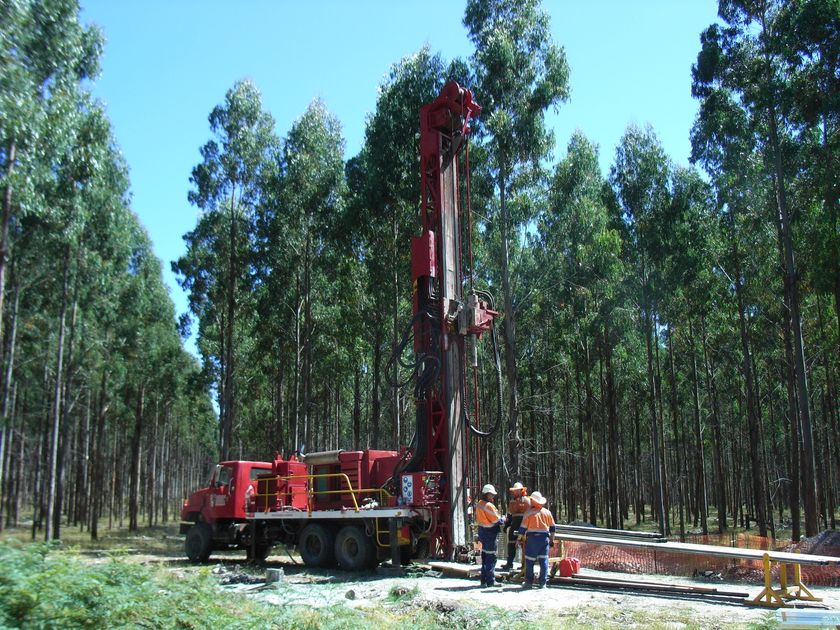KUTh Energy with an inferred resource of 1,150 MW in Tasmania
Australian KUTh Energy Limited (ASX:KEN) announces the results of an independent assessment of the Company’s Nicholas Fingal geothermal play, bringing online KUTh’s second Inferred Geothermal Resource in its main Tasmanian Tenement, SEL 26/2005.
In a release, Australian “KUTh Energy Limited (ASX:KEN) announces the results of an independent assessment of the Company’s Nicholas Fingal geothermal play, bringing online KUTh’s second Inferred Geothermal Resource in its main Tasmanian Tenement, SEL 26/2005.
The assessment, estimates an Inferred Geothermal Resource of 101,000 PJ for the identified reservoir volume of 384 km³. When added to KUTh’s estimated Inferred Geothermal Resource of 260,000 PJ at Charlton Lemont in the Tasmanian central midlands (see release 14 July 2009) the cumulative Inferred Geothermal Resource for Tenement SEL 26/2005 amounts to an estimated 361,000 PJ, representing the second largest Inferred Resource inventory in Australia. Figure 1 identifies KUTh Inferred Resource targets
Commenting on today’s announcement, Managing Director David McDonald said: “We are very encouraged by our second Inferred Resource estimate in Tasmania which provides us with options on how we progress the next stage development of our projects.
Although we are at an early stage of resource assessment we can see the potential for these resources to play a significant role in energy supply, both in Tasmania and in the broader national electricity market. If we are successful in recovering and converting just 3% of our combined projects 361,000 PJ we would have the potential to generate a constant flow of 1150MW of electricity over a 30 year period – enough to service the current demand of Tasmania’s domestic and industrial needs”.
When asked about how such a capacity would fit with existing hydro-electricity infrastructure and wind projects slated for the state Mr McDonald pointed out that Tasmania has been an increasing importer of power ever since the Bass Link interconnector to mainland Australia was opened in April 2006: “Imported power has increased from 13% in 2006/7 to 25% of Tasmania’s power needs in 2008/9 and we are keen to work alongside the Tasmanian government and the hydro resources to ensure we reverse this trend and export sustainable long term renewable power to the National Electricity Market (NEM).
It has been pleasing to see the commitment of funds by the Tasmanian Government to initiate a feasibility study into the construction of a second Bass Link to the mainland to maximise the potential for export of Tasmanian Renewable Energy resources. Tasmania has the potential to be a major renewable energy hub and this will bring with it industry, jobs and considerable infrastructural investment.
A Geothermal power station of 100MW will require an investment in the region of $600- $700m although the vast size of the inferred geothermal resource potential implies that this would be just the beginning. This scale of investment into the state will be a major contributor to the economy and the environment.”
Tasmania is gifted with renewable energy development potential and has taken a lead in the development of hydro resources and wind projects. In February, the Tasmanian government released the “Tasmanian Greenhouse Gas Emission Reduction Wedges Project” report showing options for carbon abatement potential.
The report forecasts that by 2020 the potential exists for renewable energy exports to mainland Australia to contribute 45% of the State’s carbon abatement program and allowing for increased power demand the forecasts show potential for 47% by 2050. Achievement of these targets will make Renewable Energy a cornerstone of the Tasmanian economy and a major contributor to the Tasmanian and national Mandatory Renewable Targets.
KUTh has been one of the few companies to carry out an extensive geophysical exploration program in order to target its drilling locations. A combination of magneto-telluric studies, aerial magnetics, gravity surveys and a major drilling program across the tenements has allowed the company to zero in on the high heat flow locations and best suited geological formations. The company will continue to employ this approach prior to commissioning its next-stage deep-drilling programs.”
Source: Company release (pdf)


















